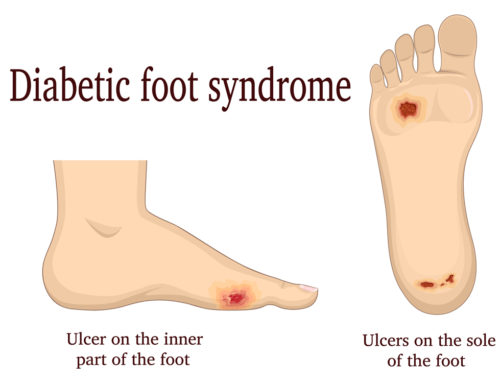Can Physical Inactivity Cause Low Energy
The World Health Organization recommends at least 30 minutes of exercise daily, but most adults don’t meet these goals. The result of such physical inactivity is a widespread issue causing low energy and various health problems, including weakened joints, bones, muscles, blood vessels. Move your body, dance, or exercise but avoid sedentary lifestyle. In fact, the more sedentary our lifestyles become, the higher the risk of premature death. And knowing how beneficial exercise is for us isn’t always convincing enough to change our behavior.
For those dealing with a weakened heart or joints and other temporary or chronic health problems, physical therapy is often recommended to meet their exercise requirements. A trained therapist teaches you the best movements to manage weakened or injured joints, muscles, bones, and blood vessels. The exercises train the body to reduce muscle fatigue and improve circulation for higher blood oxygen levels. When you’re ready, your physical therapist will recommend new activities to try at home for a safer, healthier lifestyle.

The Links Between Physical Inactivity and Low Energy
According to a comparative study by Timothy Puetz, 20% of adults experience persistent fatigue, likely resulting from inactivity 1. The less exercise and more sedentary your lifestyle, the lower your energy levels.
Physical inactivity can lead to fatigue and low energy because when we don’t move our bodies, our muscles become weaker, and our blood circulation slows down. This means less oxygen and nutrients reach our cells, making us feel tired and drained.
Even athletes who take a break for training due to deconditioning or injury aren’t exempt from such results. In fact, even a 4-6 week break from exercise causes significant muscle strength loss, as noted in Gregory Bogdanis’ article 2. When training resumes, muscle fatigue occurs more rapidly due to reduced muscle mass and blood flow.
So, why is physical inactivity so common, and how is it linked to low energy? Well, in the last couple of decades, our lives have become more sedentary. First of all, career options have transitioned from physical labor to computerized desk work. These days, most people use computers for work and recreation.
Though not as physically demanding, the mental work increases, causing blood sugar fluctuations, according to a recent article 3. When this occurs, we eat more, even though we aren’t active enough to burn those excess calories. The result is weight gain and fatigue, making us too tired to exercise and prevent further complications.
Another reason of physical inactivity is that our recreational activities also involve screens, including television, video or computer games, and various apps. The more time we spend in an inactive state, the faster our body weakens. We also snack more, choosing salty or sugary options instead of healthy foods that improve energy levels. Weight gain, insulin resistance, and muscle atrophy are the results, making it harder to get moving again.
Impact on sleep
Physical inactivity is one of the many factors that affect your sleep habits 4. It alters core temperature, mimicking the way the body prepares for sleep. There are also hormonal changes and body clock realignments that occur while working out.
If you’re lacking exercise in your routine, these functions begin to lag, causing sleep interference. Low energy doesn’t help you sleep better and may actually cause daytime fatigue, reducing your drive to exercise even more.
Impact on mental health
As well as causing physical issues, inactivity may result in mental health disorders 5. Low energy caused by lack of exercise and sleep problems may result in various mood disorders. In fact, the risk of anxiety and depression increases with reduced exercise and sedentary habits.
Physical activity also releases hormones that calm the mind and reduce stress. Without exercise, anger and stress worsen with no outlet to release them, reducing mental health even more.
Overall, staying physically inactive for extended periods can lead to a cycle of low energy, making it harder to get moving and break out of that cycle.
Physical activity triggers the release of endorphins, which are chemicals that boost mood and energy levels. Without exercise, these feel-good chemicals aren’t released as much, leading to lower energy and mood.
Resources:
- Timothy W Puetz, (no date), Physical activity and feelings of energy and fatigue: epidemiological evidence https://pubmed.ncbi.nlm.nih.gov/16937952/
- Gregory C Bogdanis, May 17, 2012, Effects of Physical Activity and Inactivity on Muscle Fatigue https://www.frontiersin.org/journals/physiology/articles/10.3389/fphys.2012.00142/full
- Shirin Panahi and Angelo Tremblay, Sept. 9, 2018, Sedentariness and Health: Is Sedentary Behavior More Than Just Physical Inactivity https://www.frontiersin.org/journals/public-health/articles/10.3389/fpubh.2018.00258/full
- Danielle Pacheco and Dr. Jenny Iyo, Dec. 22, 2023, Exercise and Insomnia https://www.sleepfoundation.org/insomnia/exercise-and-insomnia#references-83362
- (Several names), Sept 11, 2018, Changes in sedentary time are associated with changes in well-being over 1 year in young adults https://www.ncbi.nlm.nih.gov/pmc/articles/PMC6082791/
This article contains informational and educational materials and does not replace health or medical advice. For questions or concerns regarding your medical condition or health objectives, speak to a qualified physician or healthcare provider.






Leave A Comment